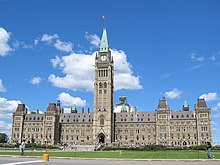Bankruptcy and Insolvency Act
| Bankruptcy and Insolvency Act | |
|---|---|
 |
|
| An Act respecting bankruptcy and insolvency | |
| Citation | RSC 1985, c. B-3 [1] |
| Enacted by | Parliament of Canada |
| Date assented to | 1985 |
The Bankruptcy and Insolvency Act ("BIA") is one of the statutes that regulates the law on bankruptcy and insolvency in Canada. It governs bankruptcies, consumer and commercial proposals, and receiverships in Canada.
It also governs the Office of the Superintendent of Bankruptcy, a federal agency responsible for ensuring that bankruptcies are administered in a fair and orderly manner.
The nature of the Act within Canada's legal framework governing insolvency was described by the Supreme Court of Canada in Century Services Inc. v. Canada (Attorney General):
[13] Canadian commercial insolvency law is not codified in one exhaustive statute. Instead, Parliament has enacted multiple insolvency statutes, the main one being the BIA. The BIA offers a self-contained legal regime providing for both reorganization and liquidation.... It is characterized by a rules-based approach to proceedings. The BIA is available to insolvent debtors owing $1000 or more, regardless of whether they are natural or legal persons. It contains mechanisms for debtors to make proposals to their creditors for the adjustment of debts. If a proposal fails, the BIA contains a bridge to bankruptcy whereby the debtor's assets are liquidated and the proceeds paid to creditors in accordance with the statutory scheme of distribution.
With certain exceptions, the BIA covers a wide range of entities:
The Act governs bankruptcy proceedings, which are invoked:
The Act also governs receivership proceedings. Receivers may be appointed by a secured creditor under the terms of a general security agreement (where the debtor voluntarily agrees), or by the court where a secured creditor:
Provision is also made for dealing with cross-border insolvencies and the recognition of foreign proceedings.
Several notable cases known as the "bankruptcy quartet" stand for the following propositions about how the Act interacts with provincial legislation:
However, there are instances where provincial law will continue to apply:
Issues concerning the extent of federal paramountcy continue to come before the Supreme Court of Canada. In the 2015 "paramountcy trilogy," the boundaries were further explored:
...
Wikipedia
